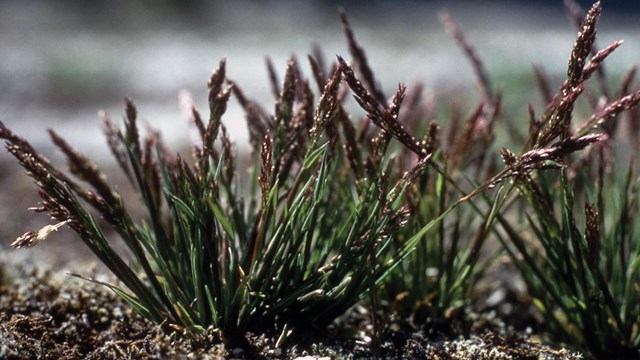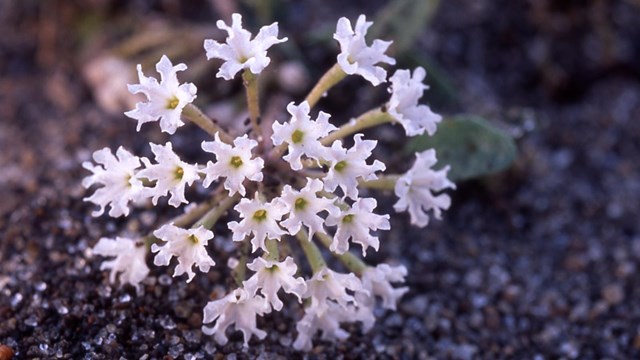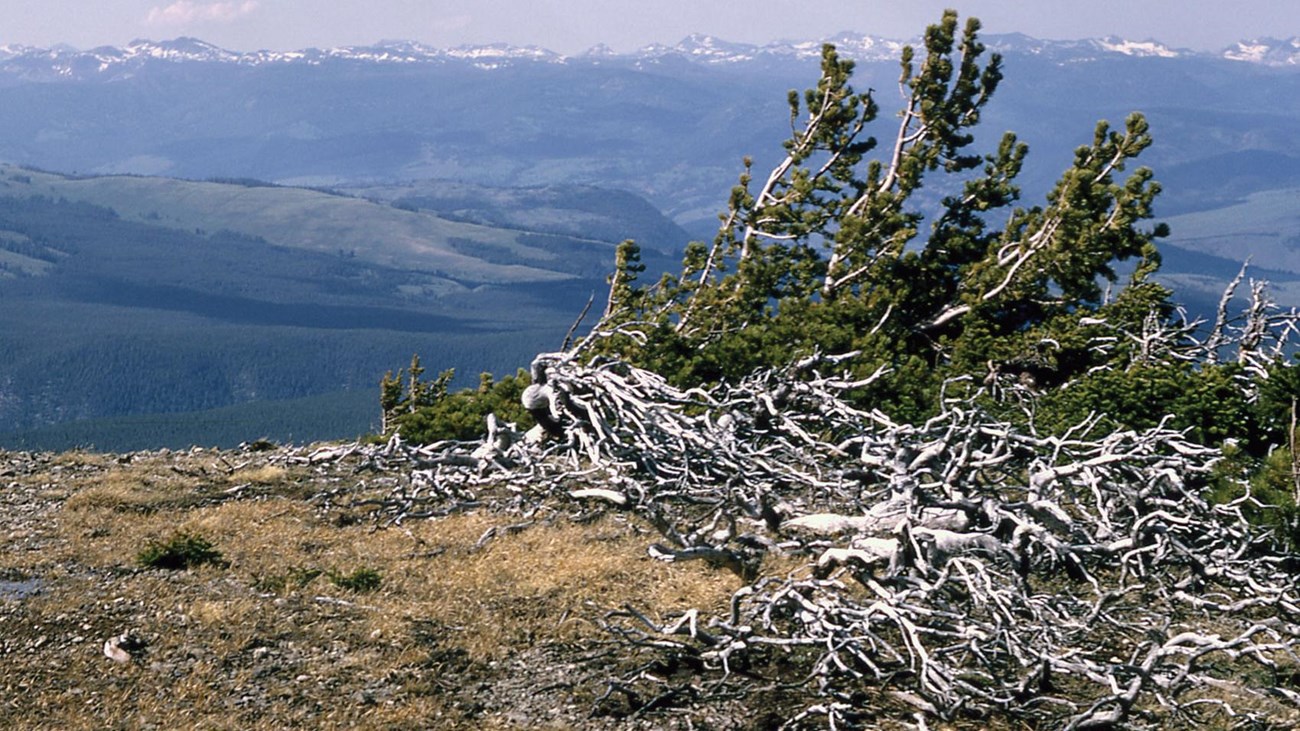
NPS Approximately 250 species of wild buckwheat are found in the world, with most of the species occurring in arid regions of the western United States. The group has undergone rapid evolution, leading to numerous closely related taxa. The sulfur buckwheats (Eriogonum umbellatum), of which there are 41 recognized varieties in the West, exemplify this rapid speciation. Several varieties of sulfur buckwheat live in the park, but the variety endemic to the park, Yellowstone sulphur flower (Eriogonum umbellatum var. cladophorum), found only in the Firehole River drainage. DescriptionYellowstone sulphur flower has bright yellow flowers and very hairy, somewhat gray looking leaves, distinguishing it from the more common varieties. The other bright yellow buckwheat in the area, Piper’s wild buckwheat (Eriogonum flavum var. piperi), blooms early in the summer, well before Yellowstone sulphur flower, and on close examination the flowers are hairy on the exterior. The close relative of Yellowstone sulphur flower has creamy yellow flowers without hairs, greenish leaves, and blooms before Yellowstone sulphur flower. Even though these two taxa are considered members of the same species, there has been no sign of interbreeding or hybridization. Growing on mildly geothermally influenced ground, this plant community includes several species that are more commonly encountered at lower elevations or as components of the Great Basin flora. Superficially, these areas in the vicinity of the park’s geyser basins look relatively barren, but the plant species representing different areas of the West form a unique plant community that can be found nowhere else. DistributionYellowstone sulphur flower is adapted to survive on barren, slightly geothermally influenced open areas. It apparently does not tolerate any shading, so it is a conspicuous component of relatively dry plant communities adjacent to the park’s thermal areas. The geographic range of this variety is highly restricted, having been found only from the Upper, Midway, and Lower geyser basins to the vicinity of Madison Junction. Adaptation to life in a geothermal setting means that this taxon has to be able to move with changes in the geothermal system. Yellowstone sulfur buckwheat is capable of recolonizing disturbed areas, as demonstrated by its presence near the Old Faithful Inn and Visitor Education Center, and other locations in the Upper Geyser Basin. Source: NPS DataStore Collection 7863. To search for additional information, visit the NPS DataStore. 
Vegetation & Resources Management Branch
Park employees inventory, monitor, manage, and research the vast array of plant communities in the park. 
Ross's Bentgrass
Ross’s bentgrass grows only in the geyser basins in the Firehole River drainage and at Shoshone Geyser Basin. 
Yellowstone Sand Verbena
Yellowstone sand verbena occurs along the shore of Yellowstone Lake. 
Plants
More than 1,300 plant taxa occur in Yellowstone National Park. |
Last updated: April 18, 2025
